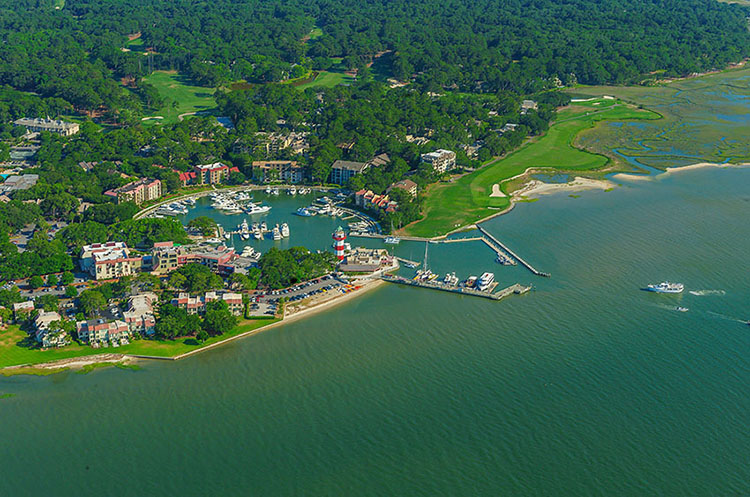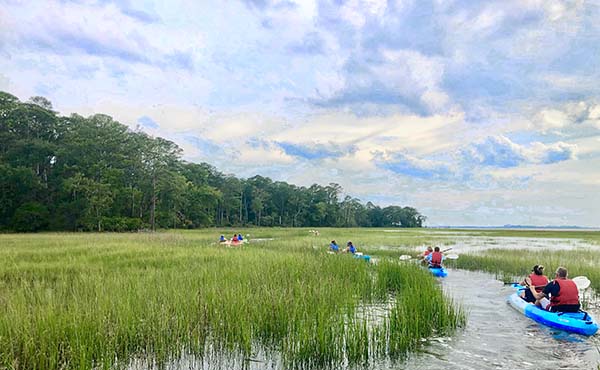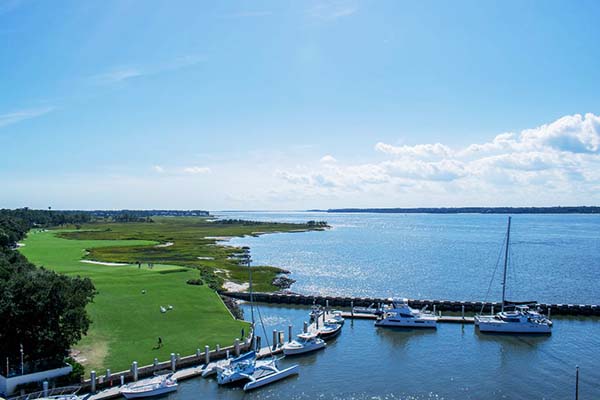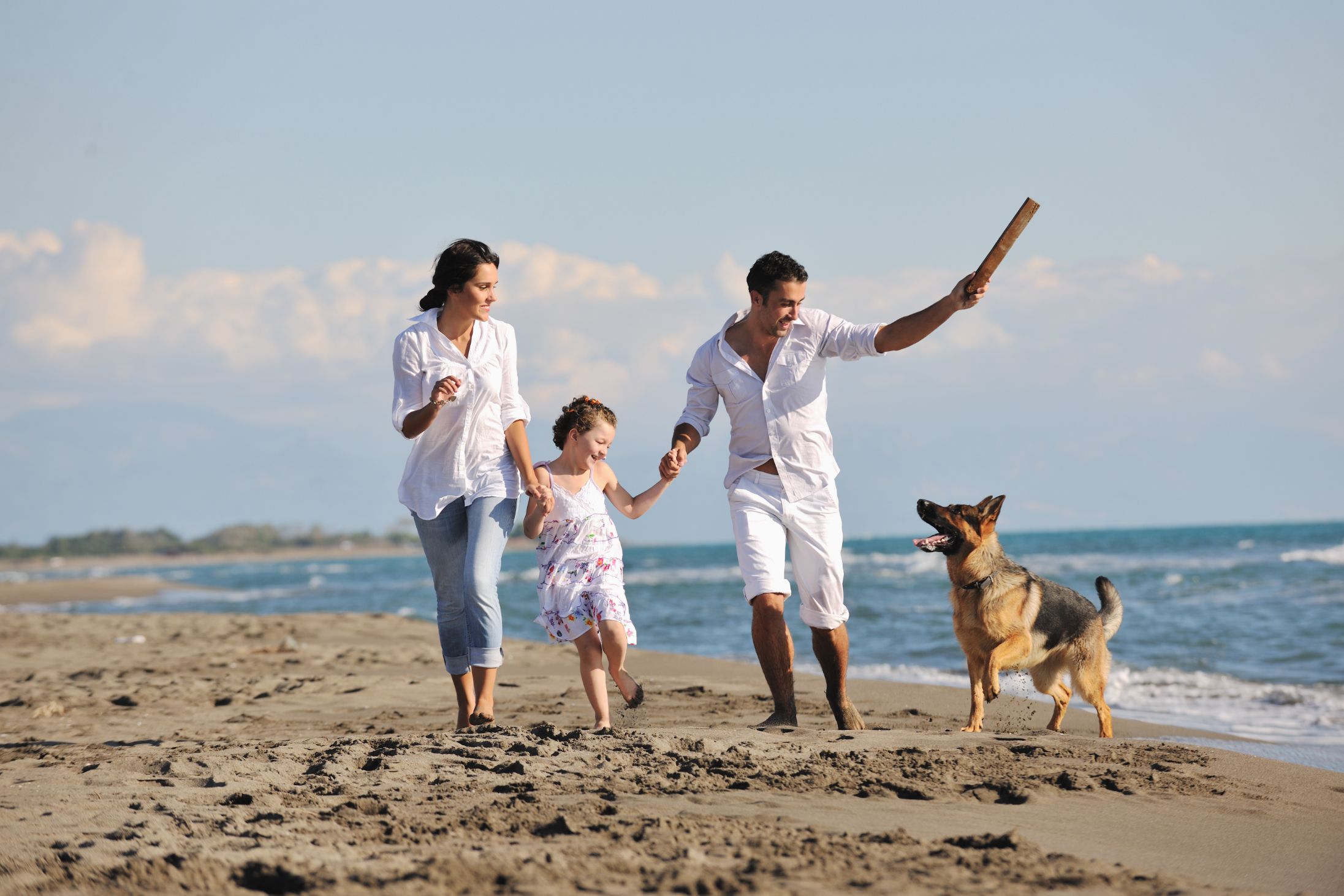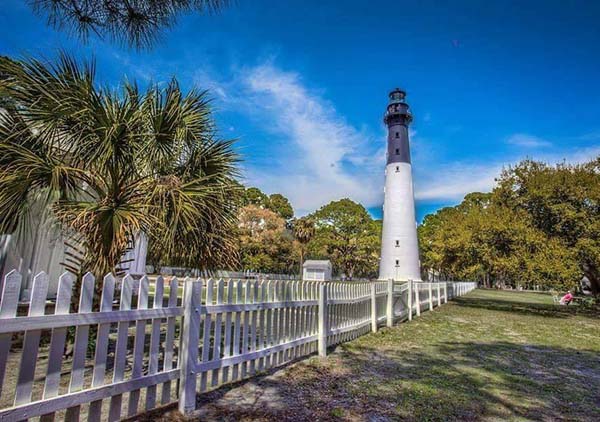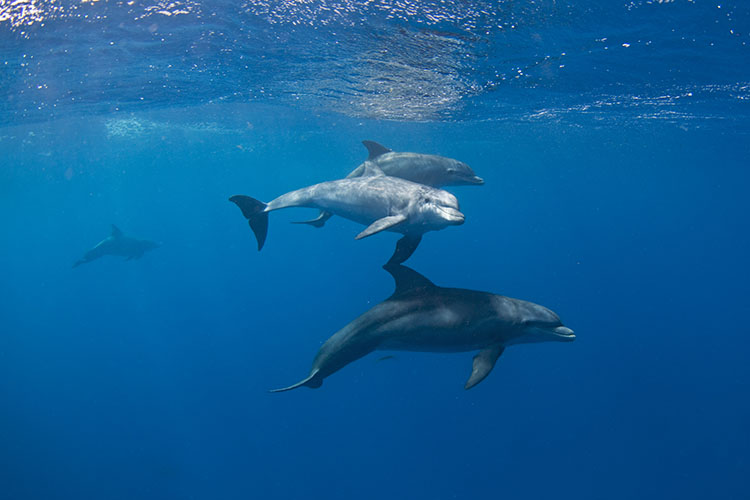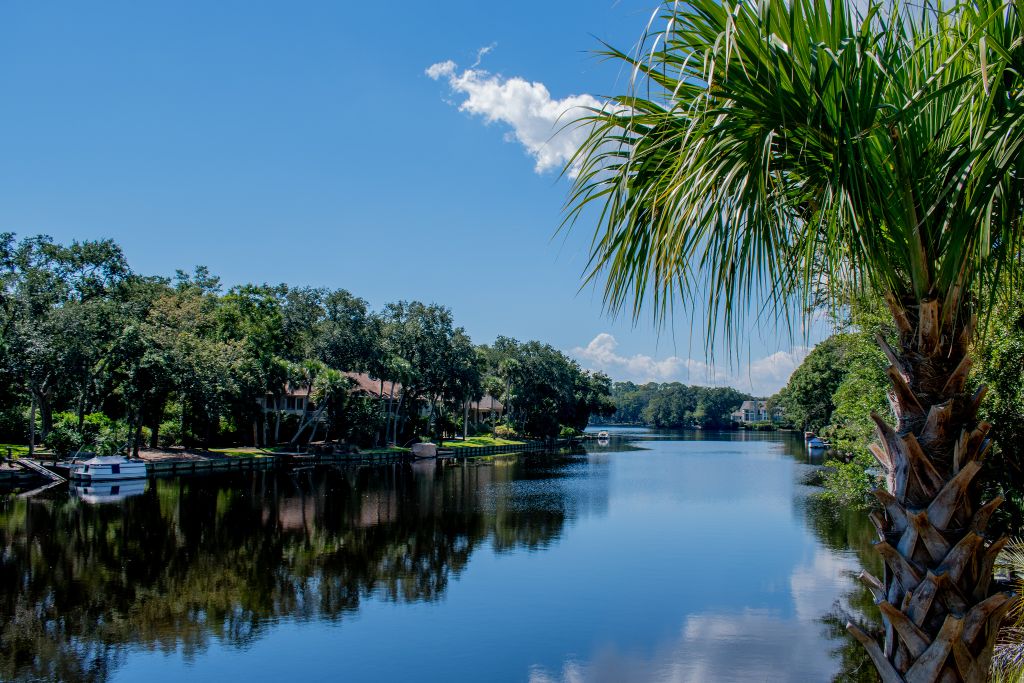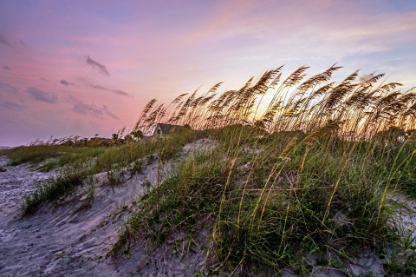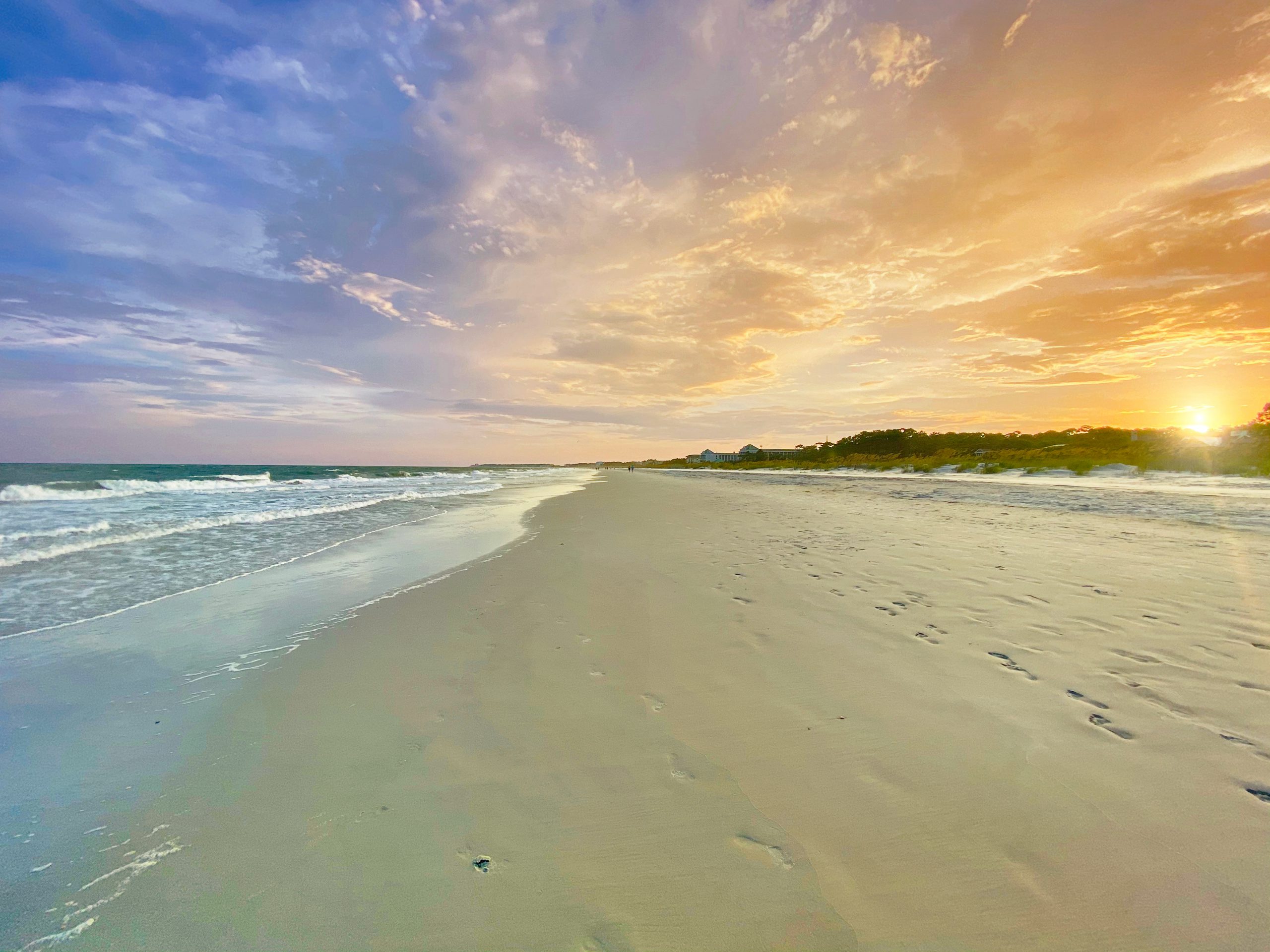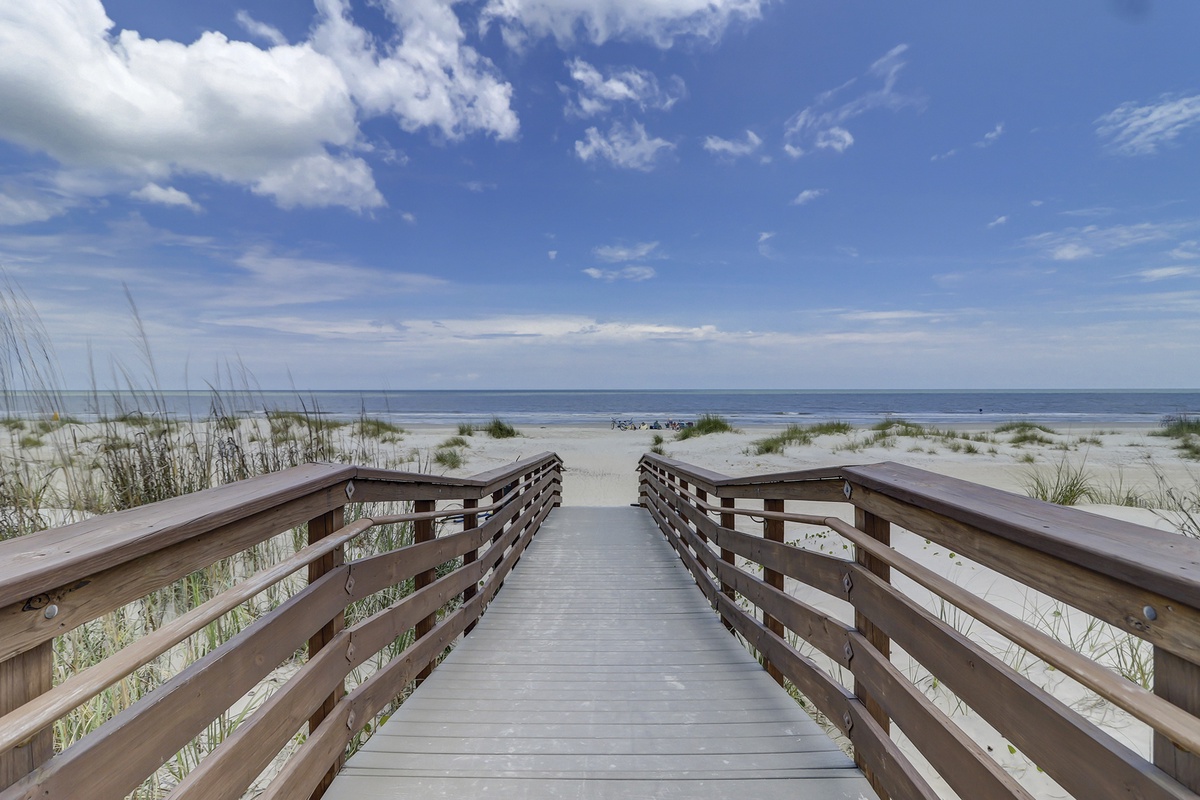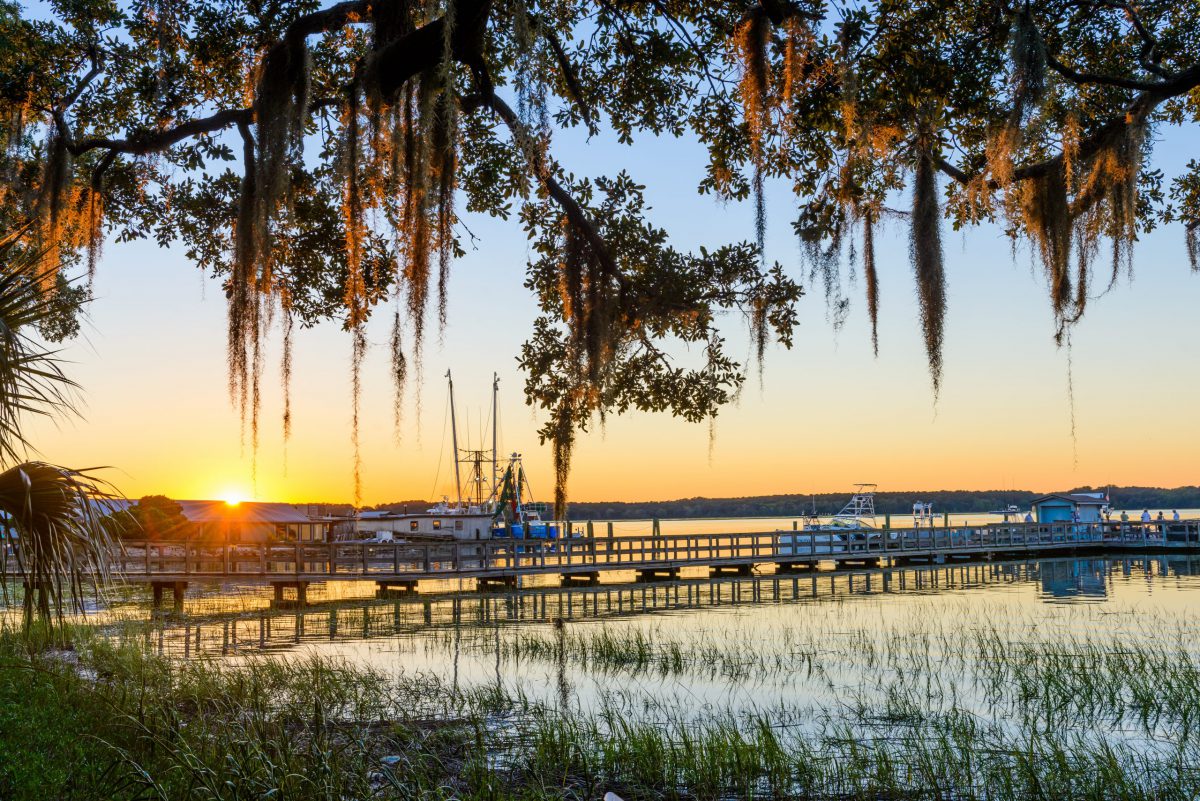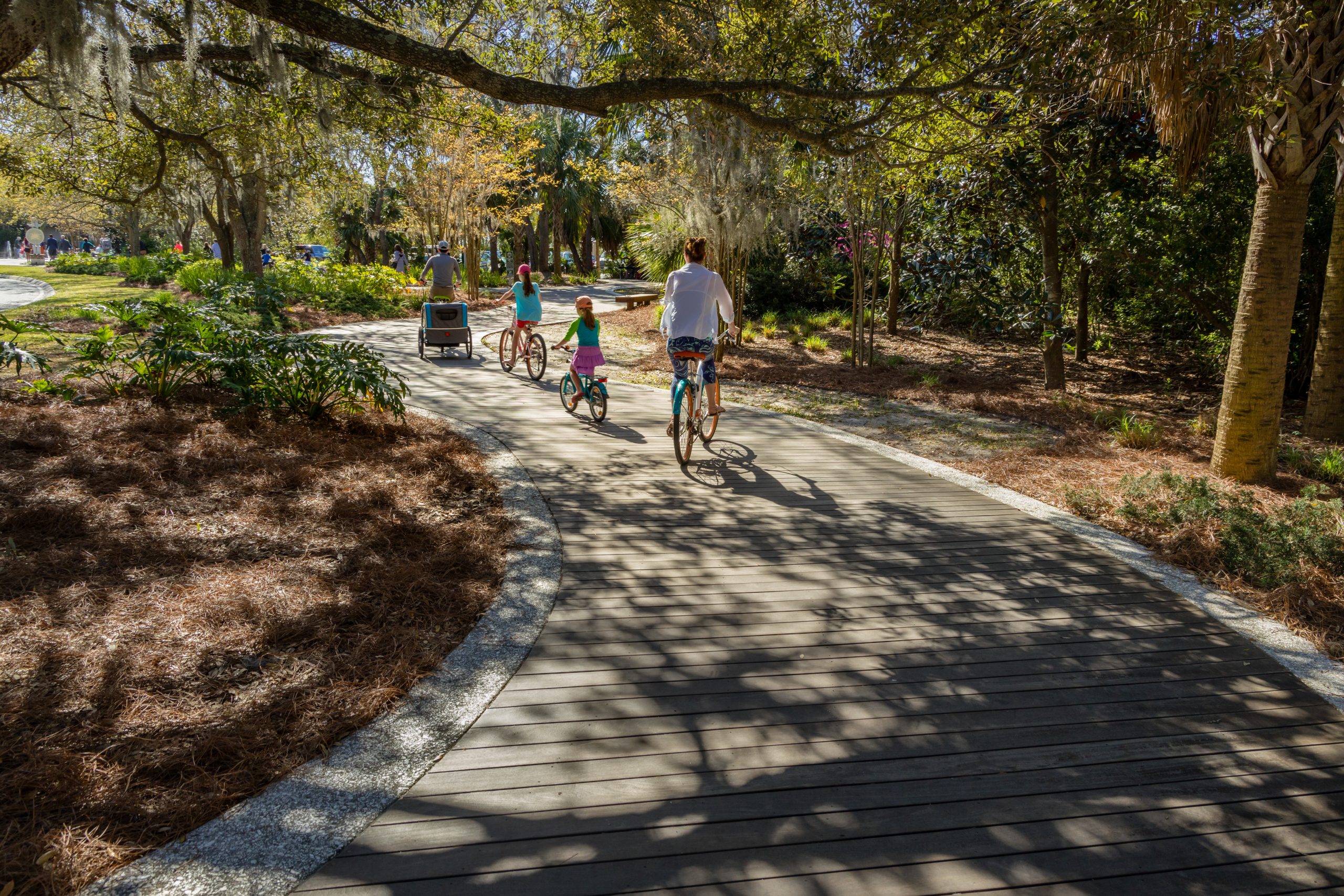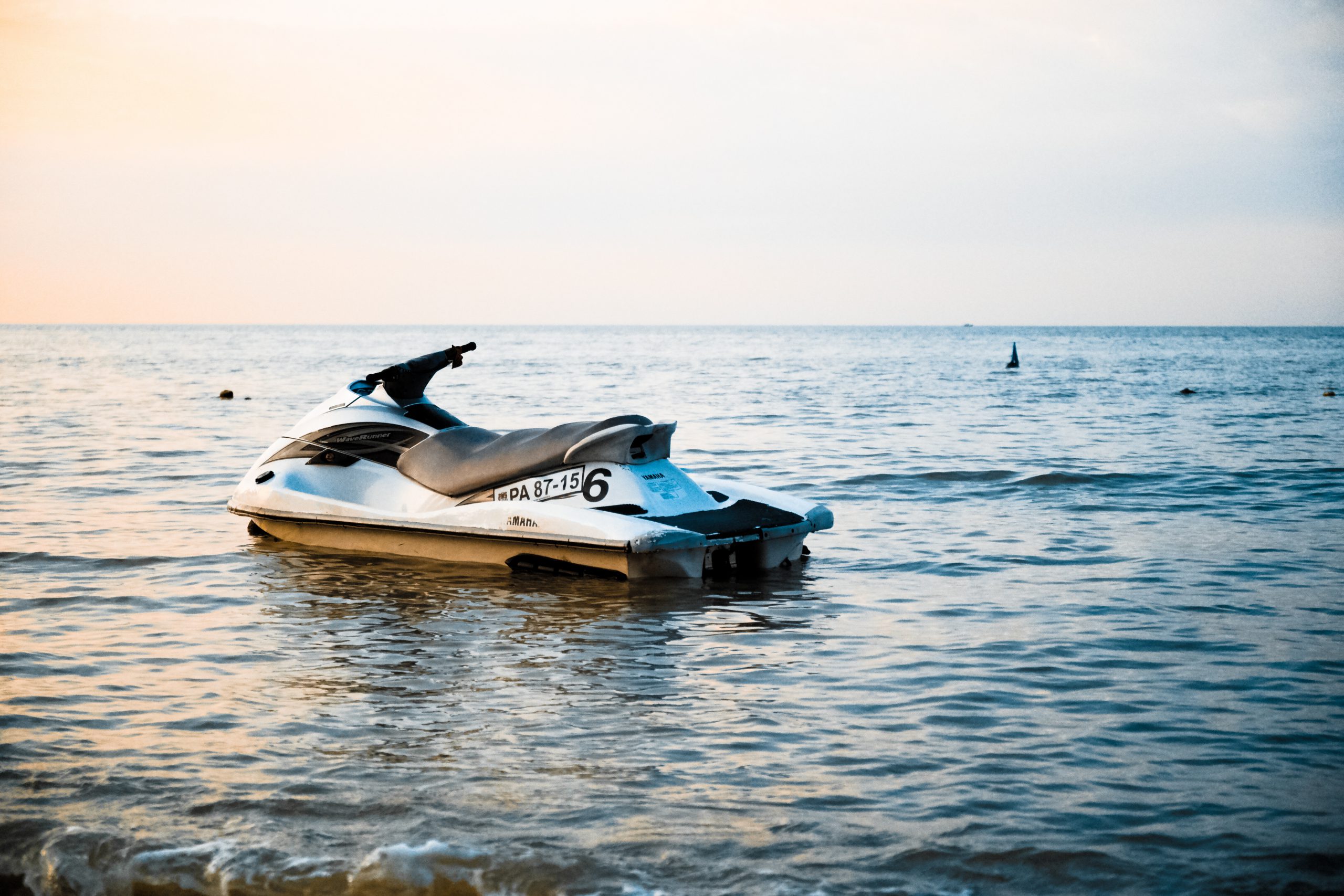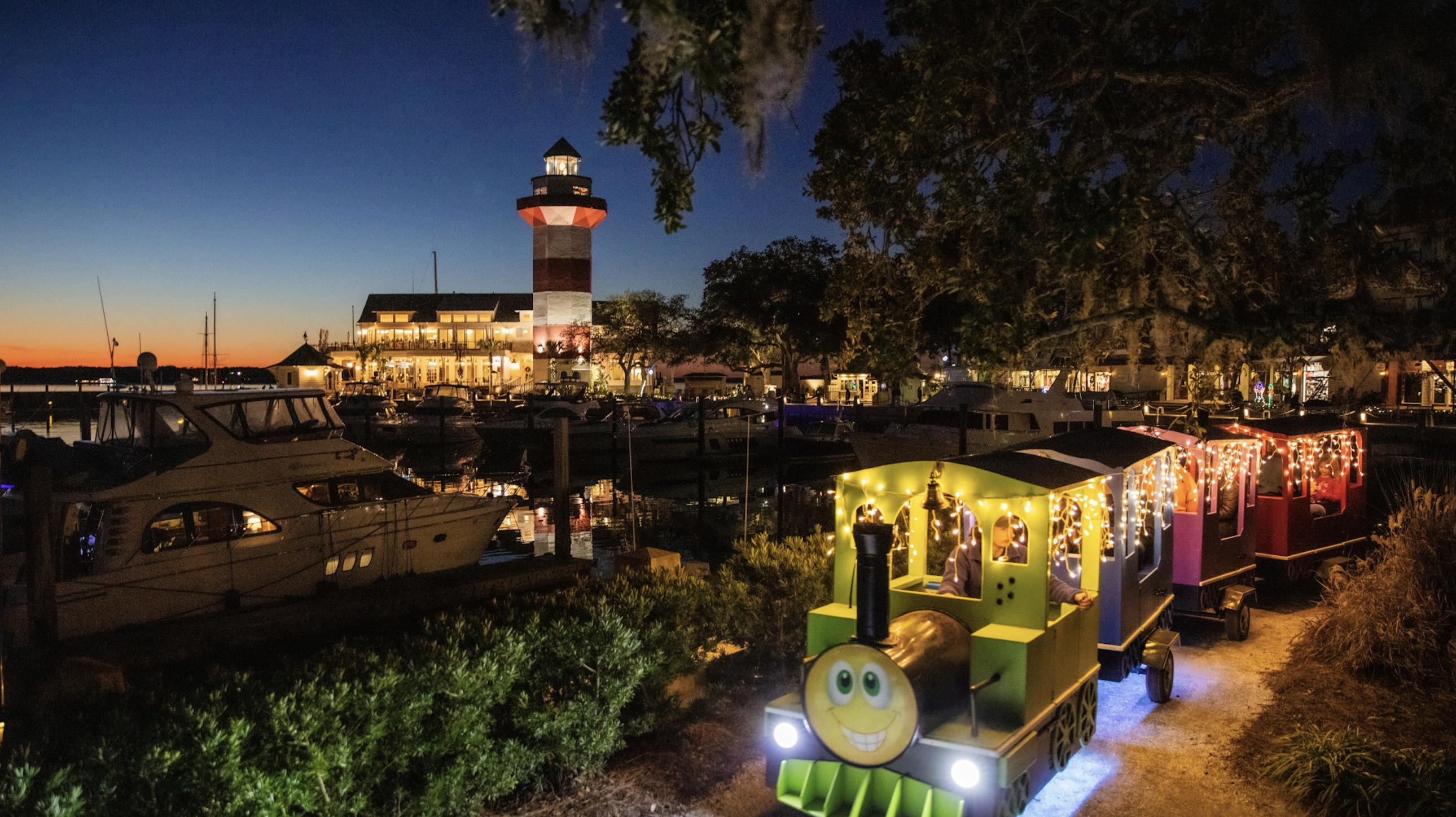Hilton Head Island is a destination known for its stunning beaches, diverse ecosystems, and unique habitats abounding in wildlife. Whether it’s witnessing the marvel of baby sea turtle hatchlings, getting up close and personal with our beloved marine mammals, encountering alligators, or discovering Hilton Head’s best birding spots with your binocs, you’ll soon discover a deep appreciation for our island’s natural wonders.
Witnessing wildlife in its natural habitat is a magical and memorable experience but it’s vital to engage in responsible wildlife watching to maintain a healthy balance between humans and the island’s delicate wildlife habitats. For the safety of our local wildlife (and yours!), here are 7 tips for responsible wildlife watching on Hilton Head Island.
1. Drive Slow
When exploring Hilton Head Island by car, it’s important to drive at a slow and cautious pace, follow the speed limits, and keep a careful watch for wildlife on the roads. During dawn and dusk, wildlife are far more active on the roads and tend to travel in groups, if you see one crossing the street, the chances are more will follow.
2. Leash Up Your Furry Friends
The locals on Hilton Head Island love our pets as much as we love our wildlife, but please respect the rules in place to protect and preserve our wildlife habitats. To ensure the safety of our local wildlife and your furry friends, please keep pets on a leash at all times, do not allow them to swim or roam near alligator habitats, keep a mindful eye around sea turtle nesting grounds, and never leave them unattended. At night, keep your pet indoors for safety and bring pet food and water dishes inside to deter nighttime visitors.
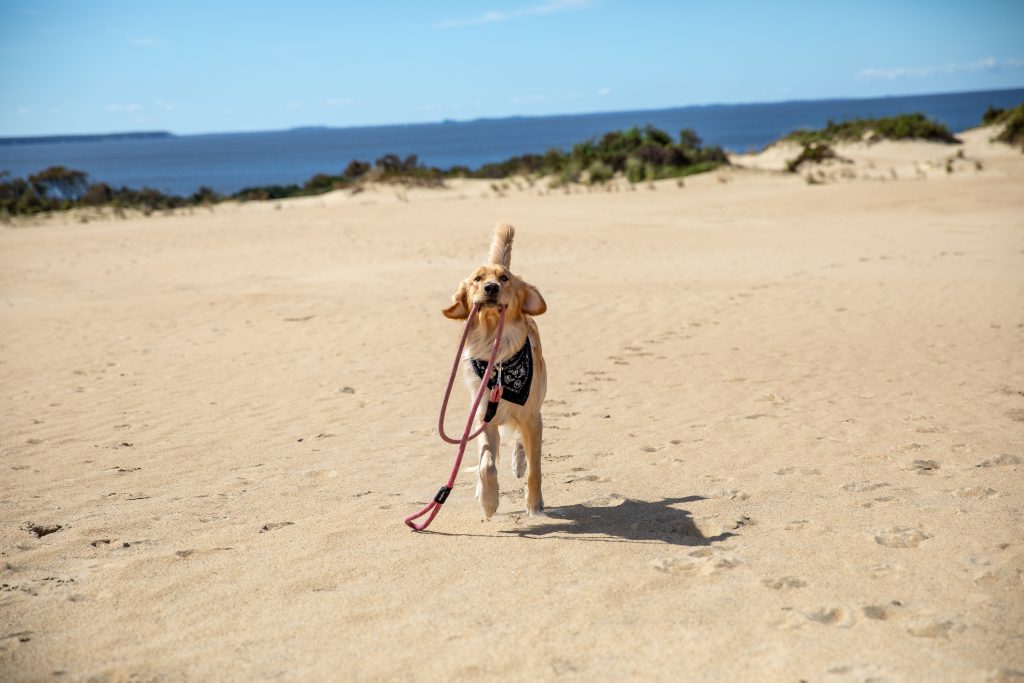
3. Observe Wildlife from a Safe Distance
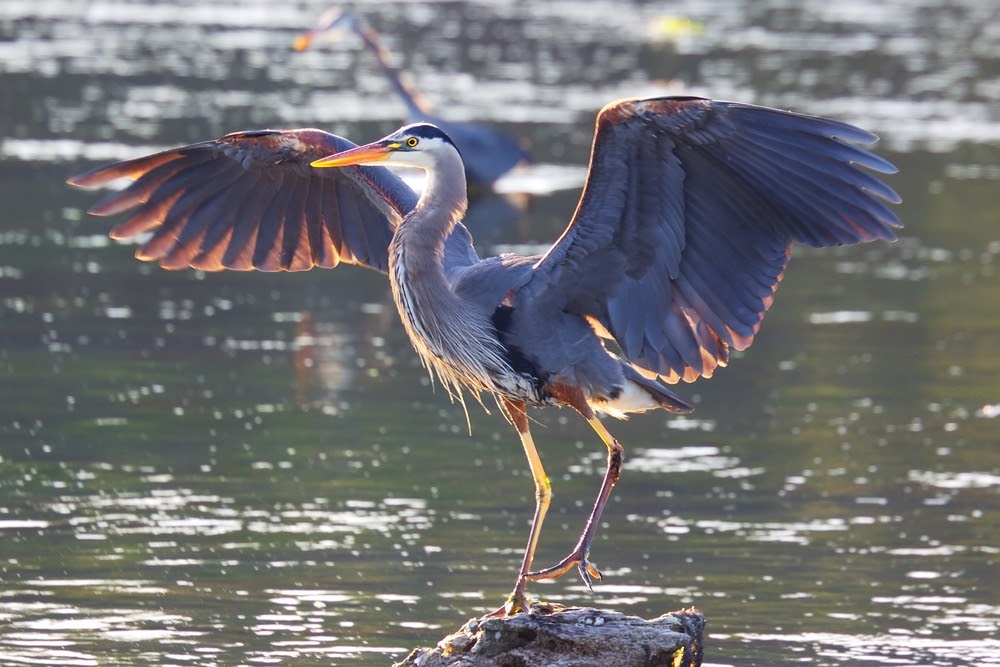
Be sure to add binoculars and a camera to your Hilton Head packing list! As exciting and tempting as it may seem to get up close and personal with wildlife, our local wildlife should never be approached. Respect their space, avoid close interactions, do not provoke, and always observe wildlife quietly from a safe and respectful distance – this is critical for their wellbeing, and yours!
- Marine Life Encounters: On the waterways surrounding Hilton Head, marine life encounters are a given. Be mindful and maintain a safe distance when boating and paddling the waterways to avoid collisions or injuries, allow them to swim freely and undisturbed, and stay at least 140 feet away from dolphins at all times. The Atlantic Bottlenose Dolphin is protected under federal law by the Marine Mammal Protection Act of 1972 and by the Endangered Species Act of 1973, it is illegal to harass, hunt, capture, or kill any marine mammal.
- Alligator Encounters: Hilton Head is home to a healthy population of American Alligators, one of the Lowcountry’s most iconic native species. Always assume every body of water may contain an alligator, swimming or wading in ponds and lagoons is prohibited, fish only from the docks and piers, and keep a close eye on kids and pets near any water on Hilton Head. If you’re planning to book at tee time on Hilton Head’s iconic golf courses, you may even encounter alligators strolling between lagoons. Local rules and regulations require you to stay at least 60 feet (4 cars in length) away from alligators.
- Sea Turtle Encounters: Hilton Head Island is a nesting ground for several species of sea turtles, including greens, leatherbacks, and the endangered loggerhead sea turtle. During the sea turtle season (May to October), our ancient residents and their hatchlings are strictly protected by local and federal regulations with severe penalties for handling or interfering with sea turtles, nesting sites, and baby hatchlings.
4. Don’t Feed Wildlife
While it may seem harmless, please resist the urge to feed our local wildlife. Feeding wildlife makes them associate humans with food, can disrupt their natural behaviors and diets, and can turn the animal aggressive leading to potentially dangerous situations. Visitors to Hilton Head are often tempted to feed our friendly local dolphin pods without realizing that under the Marine Mammal Protection Act, feeding or harassing dolphins is illegal, resulting in fines that can reach up to $100,000.
5. Always Follow the Signs
Always be on the lookout for posted signs and guidelines to avoid disturbing the natural habitats on Hilton Head Island. Whether it’s a marked-off sea turtle nesting area on the beach, an alligator alert on the fairways, or interpretive signage along the 60+ miles of Hilton Head Island pathways, these rules are in place to protect our fragile ecosystems, free-roaming wildlife, and curious visitors tempted to get too close and personal with our local wildlife.
6. Lights out!
Artificial lighting disorientates sea turtles and their hatchlings from the natural light of the moon. If you’re staying in an oceanfront rental, from 1 May to 31 October all light fixtures visible from the beach are required to be switched off between 10 PM and 6 AM. This includes interior blinds and drapes, all outdoor lighting, and any flashlight photography. Always report any sea turtle sightings or stranded sea turtles to the SC Department of Natural Resources Hotline at (800) 922-5431.
7. Leave Only Footprints
Our presence in nature should never leave a lasting impression! To minimize the impact on our diverse barrier island ecosystems and maintain the island’s pristine environment, please leave no trace, only footprints! Dispose of all trash properly to prevent harm to wildlife, always leave the beach clean, remove sandcastles and fill in holes for traveling sea turtles, and do not leave any umbrellas, chairs, or accessories on the beach overnight. Book a stay with a participating Sunset Rentals property to quality for complimentary bike & beach gear from Vayk Gear. Learn how it works HERE!
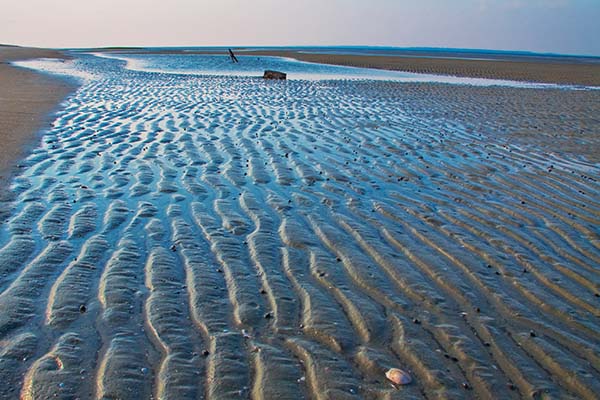
Wildlife on Hilton Head Island Beaches
The wildlife on Hilton Head is found without effort on our miles of wild beaches. Our suggestion – walk or bike ride the shoreline from where the Calibogue Sound meets the Atlantic at South Beach to the remote shoreline of Fish Haul Creek and Mitchelville Beach near Port Royal Sound.
You’ll find wildlife encounters all along the shoreline – South Beach on Hilton Head Island is a prime spot for shore birds, and dolphins making their way to the Calibogue Sound, Fish Haul Creek and Mitchelville Beach overlooking Port Royal Sound are Hilton Head’s most natural beaches with maritime forests, boardwalks for wildlife viewing, historical sites and tidal flats teeming with shorebirds and crabs (best found at low tide!).
There’s no need to head off the beaten path for wildlife encounters on Hilton Head! From luxury oceanfront villas to fairway retreats and lush lagoon hideaways, you’ll find the perfect vantage point to observe the island’s diverse wildlife from the comfort of home in our collection of 240+ Hilton Head vacation rentals – the most trusted vacation rentals on Hilton Head Island.
Questions? Call our team at (843) 785-6767 today!
Stay with Sunset Rentals
Stay near Hilton Head’s top wildlife attractions with Sunset Rentals – the chances are you won’t have to leave home to experience some of the best wildlife viewing on Hilton Head.

Our selection of luxury Hilton Head Island vacation homes and villas are situated in the top resort areas of Hilton Head Island with luxury amenities, peaceful Lowcountry views, and opportunities for wildlife watching from your porch.



